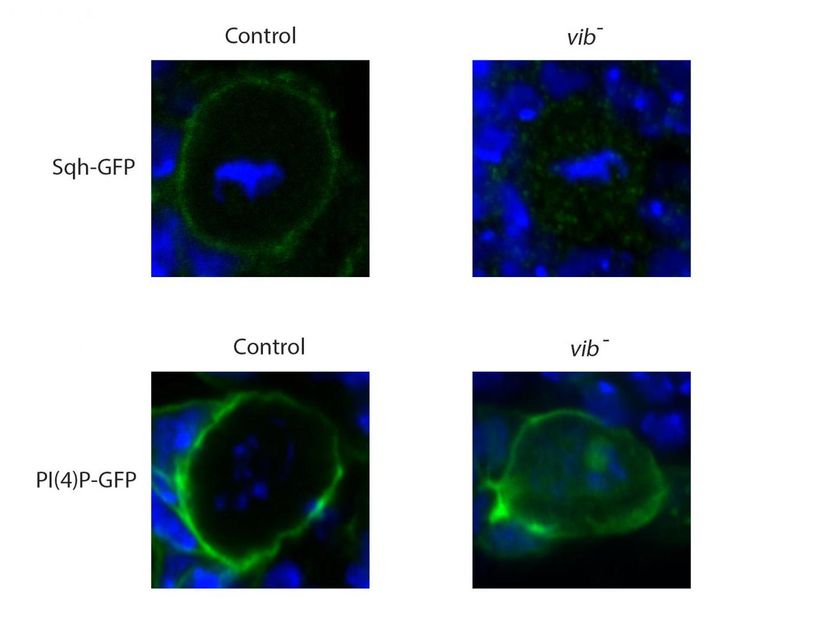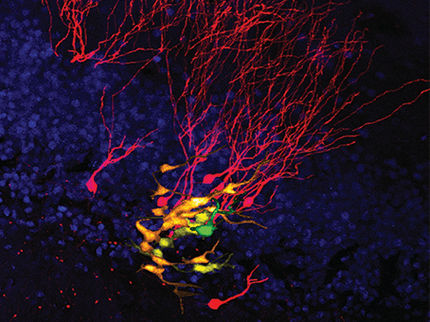Unpacking asymmetric cell division
Advertisement
stem cells are the basic material from which mature, specialised cells such as muscle and blood cells are produced -- this process is known as differentiation. One way that stem cells do this without depleting themselves is through asymmetric cell division. Through asymmetric division, a stem cell produces a new stem cell and another cell that undergoes differentiation, producing a mature cell.

Neural stem cells of vib- mutant (top right panel) lost membrane localization of myosin (Sqh-GFP) and accumulated membrane lipid PI(4)P-GFP (bottom right panel) in the cytoplasm compared with controls (left panels). GFP is shown in green and DNA is shown in blue.
Chwee Tat Koe, Duke-NUS Medical School
Studies on neural stem cells (NSCs) from fruit fly larvae have made huge contribution to our understanding of asymmetric division. Understanding asymmetric division is important because disruption of this process can result in excess NSCs formation or failure to produce mature brain cells, which in turn can cause tumour formation or neurodevelopmental disorders.
While previous studies have established that a certain type of membrane lipids called phosphatidylinositol (PI) lipids is involved asymmetry of several cell types, the role of PI lipids in asymmetric division of NSCs is not well understood. In a new study, scientists sought to understand the role of PI lipids in fruit fly neural stem cells, and focused on two proteins critical for the biosynthesis of membrane lipids: phosphatidylinositol transfer proteins (PITPs) and PI4KIIIα. The study was led by Associate Professor Wang Hongyan, Deputy Director of Neuroscience & Behavioral Disorders Program from Duke-NUS Medical School, Singapore, and her collaborators from Texas A&A University in the United States and Mechanobiology Institute of the National University of Singapore.
These proteins were chosen because the counterparts of both proteins in mammals are associated with neurodegenerative disorders such as Alzheimer's, Parkinson's and Huntington's, and cancers. Notably, the team found a new role for a PITP protein called Vibrator, which along with PI4KIIIα, play important roles in asymmetric division, a complex process that involves numerous players acting on each other. They noted that the lipid binding and transfer activities are particularly important for asymmetric division.
The team also found evidence that the mouse counterparts complement the phenotypes of fly vibrator mutants in the brains. While this implies that their work likely extends to mammals, further work will be needed to confirm if the roles of the proteins and lipids Professor Wang and her team elucidated are the same as in mammals.
Neurodegenerative disorders such as Alzheimer's, and cancers -- these diseases are still not well managed. The work by Professor Wang and her team contribute to our understanding of the molecular basis of those human disorders, which will aid in the development of future treatments. Just as importantly, their work also informs our understanding of a fundamental and vital biological process.




























































